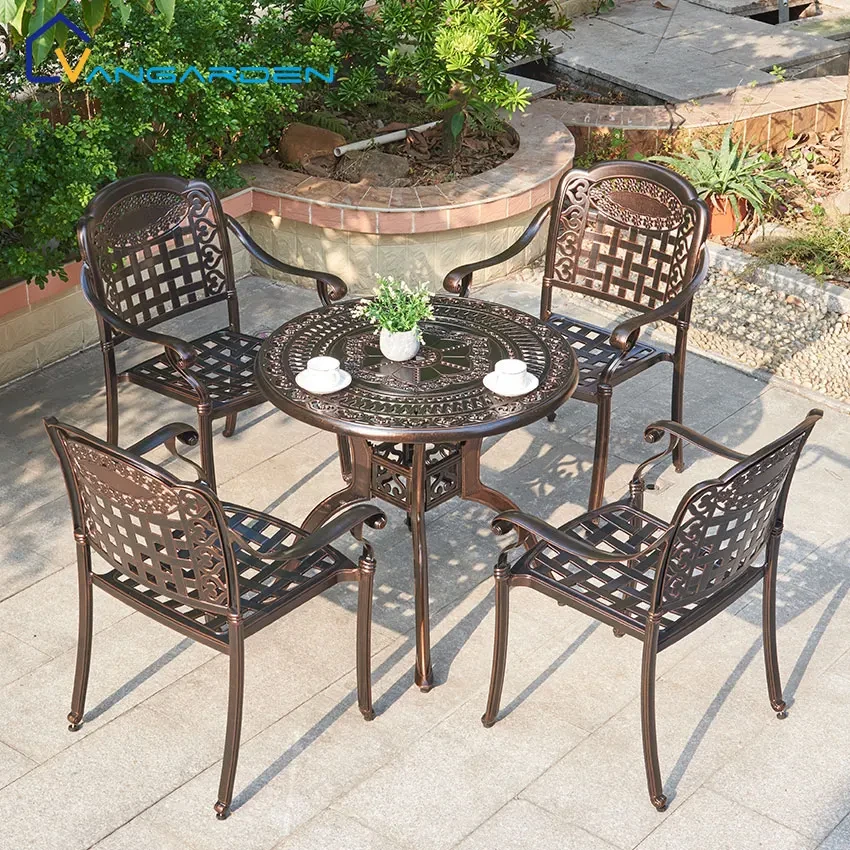Email format error
Email cannot be empty
Email already exists
6-20 characters(letters plus numbers only)
The password is inconsistent
Email format error
Email cannot be empty
Email does not exist
6-20 characters(letters plus numbers only)
The password is inconsistent


Outdoor spaces are not just extensions of our homes; they are sanctuaries for relaxation, socialization, and personal reflection. To curate a truly remarkable outdoor experience, investing in quality balcony furniture is a given. However, ensuring the longevity of these cherished pieces requires more than routine care—it demands a proactive approach to protection. In this comprehensive guide, we will embark on the intricate journey of DIY waterproofing for your balcony furniture. This endeavor goes beyond preservation; it is an art form, a testament to the resilience of outdoor bliss against the whims of time and nature.
Selecting the right materials for your DIY waterproofing project is akin to choosing a tailored suit of armor for your outdoor assets. Among the stalwarts in this arsenal are waterproofing sprays and sealants. These are not mere coatings; they are fortresses, standing resolute against the onslaught of rain, sun, and varying temperatures. Consider silicone-based sealants for longevity and waterproof sprays with UV protection for added defense against the sun's relentless rays.
Additionally, the ensemble is complemented by weather-resistant fabrics and custom-fitted covers. High-denier polyester covers with PVC backing provide robust protection against both rain and UV damage. Weather-resistant fabrics, such as solution-dyed acrylics, are not only durable but also offer a touch of luxury to your outdoor haven.
The geographical context shapes the battleground for your outdoor haven. In regions where rain is a frequent visitor, robust waterproofing sprays emerge as unsung heroes, repelling water with unwavering determination. Echoing the ethos of our times, sustainability takes center stage with eco-friendly options. Look for products that bear certifications such as Oeko-Tex Standard 100 or Bluesign, ensuring your protection efforts are in harmony with environmental stewardship.
Embarking on the journey towards a waterproofed sanctuary is akin to navigating the chapters of a well-crafted novel. Each step unfolds with precision, building upon the last to create a narrative of protection and endurance.
Preparing the Furniture Surface:
The prologue to this tale demands meticulous preparation—a cleansing ritual that strips away the vestiges of yesterday. For wooden furniture, consider using a gentle wood cleaner to remove dirt and mildew. As if sanding the rough edges of a character in a novel, this step sets the stage—a canvas primed for transformation.
Applying Waterproofing Solutions:
The application phase unfolds like a painter's brushstroke, with each sweep fortifying against impending challenges. Waterproofing sprays and sealants, akin to the artist's palette, are applied with precision, bestowing resilience upon every inch. For fabric cushions, the introduction of water-repellent solutions becomes a narrative of comfort fortified by functionality, adding depth to the plot of protection.
Consider using a high-quality marine-grade fabric protector for cushions, ensuring they remain both water-resistant and resistant to stains. Pay attention to intricate details when applying sealants to joints and crevices where water might find its way in, creating a seamless and impenetrable defense.

The symphony of timing and weather orchestrates the effectiveness of your waterproofing opus. Optimal timing, akin to a climactic scene, unfolds during dry spells when the canvas is receptive to transformation. The crescendo lies in multiple coats, each layer adding complexity to the protective symphony. Patience becomes the guiding tempo, allowing each application to resonate and contribute to the overarching narrative of preservation.
The periodic water repellency tests mimic a literary plot twist, revealing vulnerabilities and demanding a sequel—a reapplication to sustain the furniture's narrative of resilience. Much like a character in a novel facing unforeseen challenges, the furniture undergoes periodic reassessment, adapting to the evolving outdoor narrative. Use water droplets to test the effectiveness of your waterproofing efforts, ensuring that they bead up and roll off rather than being absorbed.
Embarking on a DIY journey with a budget is an odyssey of resourcefulness—a subplot that adds layers to the overarching narrative of protection.
The frugal alchemy of homemade waterproofing introduces common household items like beeswax and linseed oil as unsung heroes. For wooden furniture, a mixture of beeswax and mineral spirits can create a protective seal. Linseed oil, when applied in moderation, enhances the natural water resistance of wood. This subplot explores the delicate balance between cost-effectiveness and the use of quality materials. It is a testament to the resourcefulness that underpins the DIY ethos—a subplot that enhances the richness of the overall narrative.
Consider exploring local resources for budget-friendly alternatives. Community workshops or online forums may yield insights into cost-effective solutions that align with your DIY ethos.
In concluding this narrative, DIY waterproofing transcends mere preservation; it becomes a crafted saga. It is an ode to sustainability, an acknowledgment of regional climates, and a dance with budget constraints. Step into your weather-resistant balcony oasis—a testament to care, ingenuity, and a commitment to enduring outdoor splendor. This comprehensive guide is not just a manual; it is an invitation to participate in the ongoing story of your outdoor space—a story of protection, resilience, and the timeless pursuit of outdoor bliss.